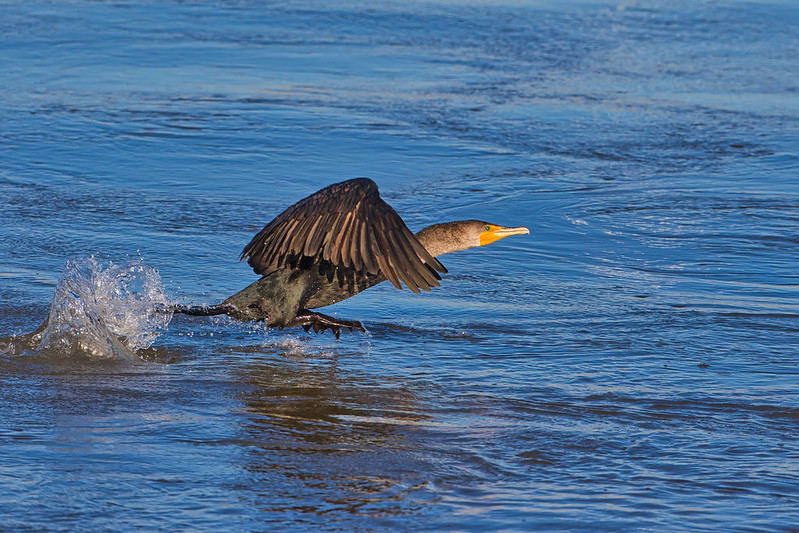Robert S. Kerr Reservoir is a fantastic spot for winter bird photography. With its variety of birds and stunning landscapes, it’s an excellent place to capture breathtaking photos. On one visit, I managed to photograph a Double-crested Cormorant taking off from the water. Moments like these are why this reservoir is so special.

Preparing for the Perfect Photo
Preparation is key in bird photography. Without it, you might miss amazing opportunities, struggle with lighting, or have trouble keeping up with the birds. For my visit, I planned ahead and arrived at the south side of the dam before sunrise to catch the best light. The golden glow of the morning sun behind me brought out the birds’ details and vibrant colors.
I parked my car and walked to the riverbank with my gear. My setup included a Canon EOS 7D Mark II camera and a Canon EF500mm f/4L IS USM lens, all mounted on a sturdy tripod. This allowed me to zoom in close without disturbing the birds. By positioning myself among the rocks, I stayed hidden and had a stable spot to track the birds as they moved.
The Value of Patience in Bird Photography
Patience is just as important as skill when it comes to bird photography. Once, I waited over an hour in complete silence before a Ring-billed Gull swooped down to catch a fish. It was worth the wait to capture that thrilling moment.
That morning, I quietly listened to the gentle flow of water, waiting for the cormorants. These birds take off and land quickly, so being ready at all times is essential. As the sun rose higher, the birds became more active. The cormorants flew low over the water, hunting for fish and taking off in bursts of energy. Each takeoff sent water droplets flying, creating dramatic and exciting scenes for my camera.
Challenges of Capturing Birds in Flight
Photographing birds in flight can be challenging but incredibly rewarding. Birds move quickly and unpredictably, so you need to focus, stay steady, and understand their behavior. Environmental factors like changing light, wind, and distance add to the difficulty, making every successful shot feel like an achievement.
To capture a cormorant taking off, I used my camera’s high-speed continuous shooting mode. This let me take a series of photos that froze the bird’s movements, from flapping wings to splashing water. I adjusted my camera to a fast shutter speed to ensure every detail was sharp. The morning light made the bird stand out beautifully against the water’s reflections.
Why Robert S. Kerr Reservoir Stands Out
Robert S. Kerr Reservoir offers countless opportunities for amazing bird photography. For more insights and tips, check out my post on bird photography at Kerr Dam, Oklahoma. Its rocky edges, open water, and surrounding plants attract many birds during the winter. Along with cormorants, I’ve spotted Bald Eagles, Great Blue Herons, ducks, and gulls here.
The south side of the dam is one of the best spots for photography. The clear views and soft morning light make it ideal for capturing action shots. Every trip to this reservoir is a chance to improve my skills and capture something unique.
Final Thoughts
Photographing a Double-crested Cormorant taking off at Robert S. Kerr Reservoir was a memorable experience. It reminded me of why I love this place so much. With preparation, patience, and quick reflexes, I captured a moment full of energy and beauty.
If you’re interested in bird photography, focus on the basics: find good lighting, choose the right position, and learn about the birds you want to photograph. Whether you have advanced gear or a simple setup, these tips will help you capture stunning photos and enjoy every outing.
